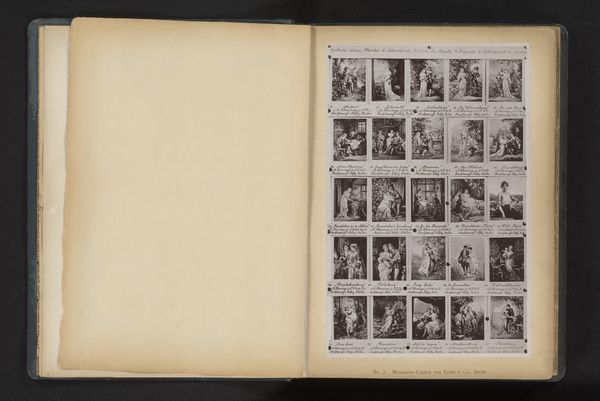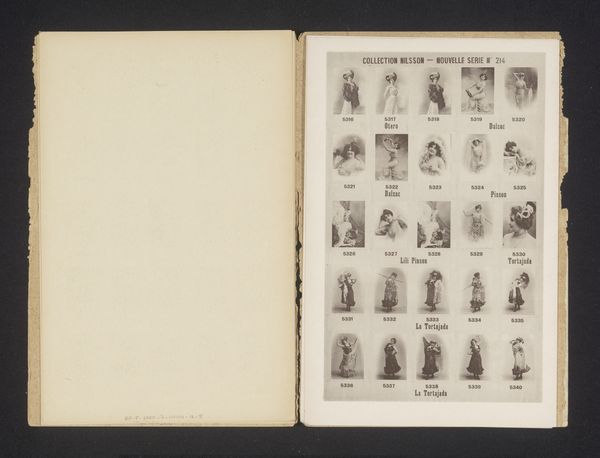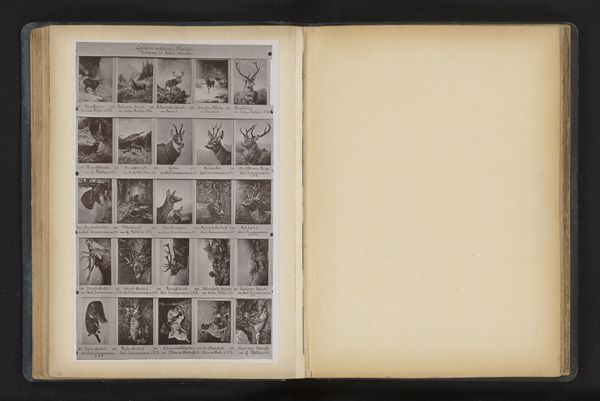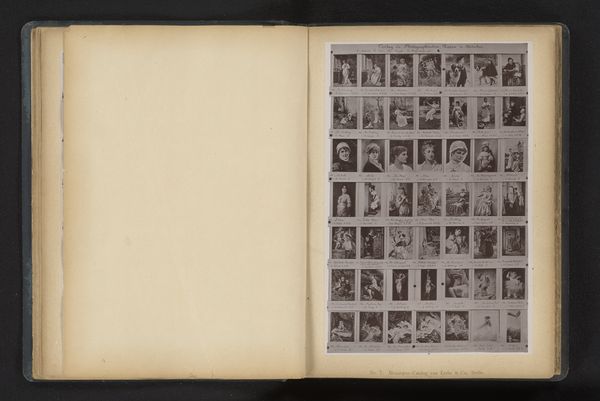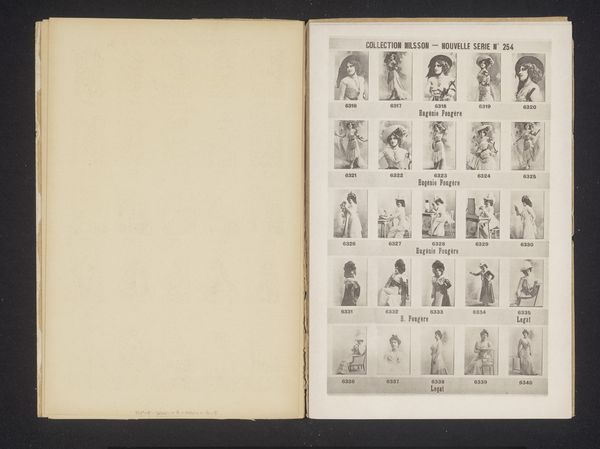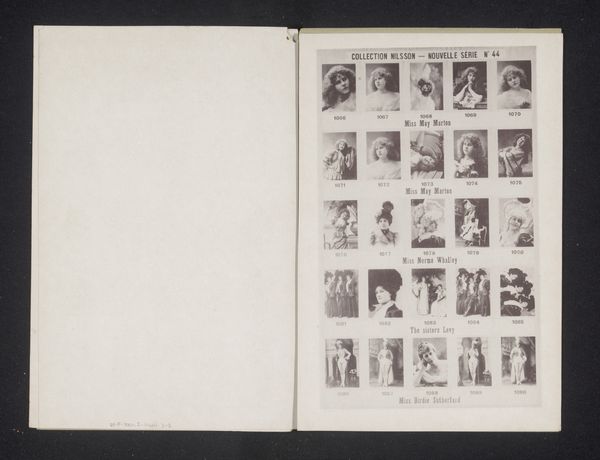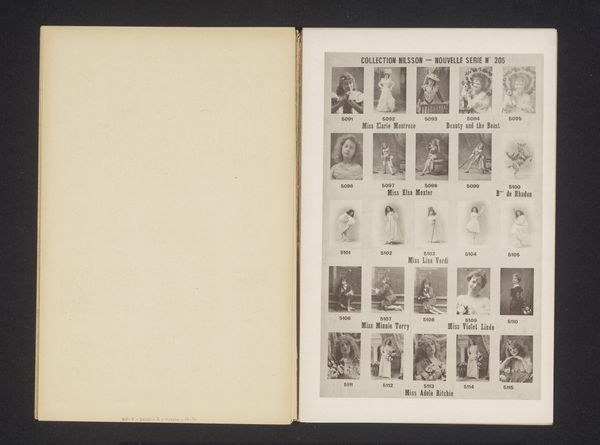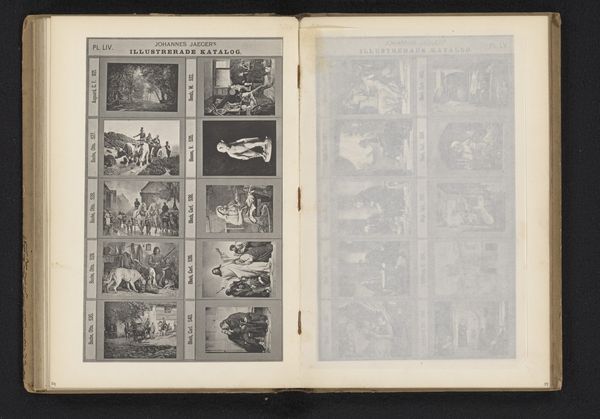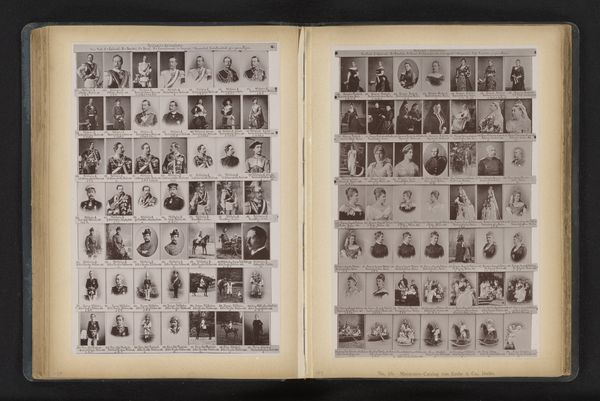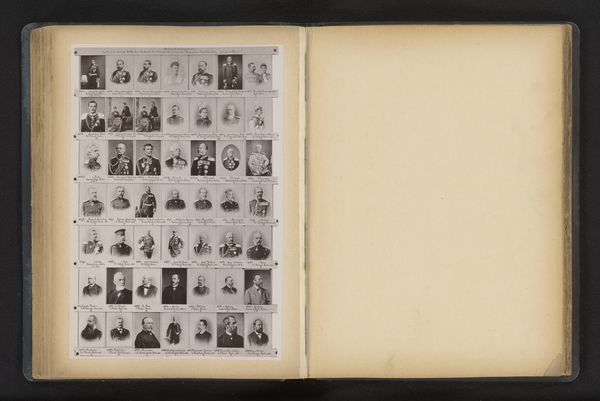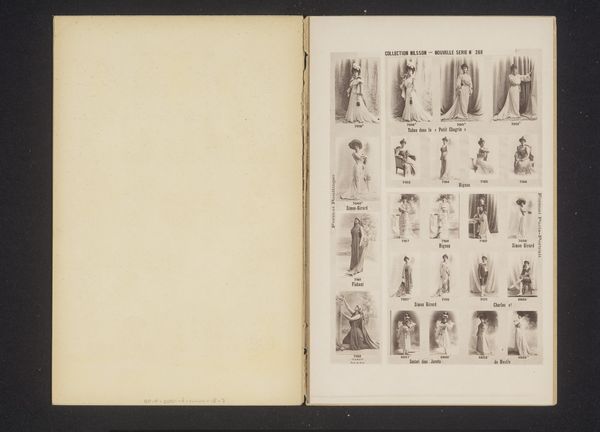
Fotoreproducties van 25 geschilderde portretten en taferelen met onbekende mensen before 1885
0:00
0:00
#
aged paper
#
homemade paper
#
paper non-digital material
#
paperlike
#
sketch book
#
paper texture
#
printed format
#
paper-based
#
folded paper
#
paper medium
Dimensions: height 265 mm, width 180 mm
Copyright: Rijks Museum: Open Domain
Curator: Here we have a fascinating find: a collection titled "Fotoreproducties van 25 geschilderde portretten en taferelen met onbekende mensen" - "Photographic Reproductions of 25 Painted Portraits and Scenes with Unknown People," dating to before 1885, credited to Erche & Co. Editor: It's like peeking into someone’s personal album from a distant past. The aged paper and the faded monochrome give it such a wistful aura. What strikes me most is the array of tiny portraits and vignettes neatly arranged across the page; it almost feels like a visual inventory of forgotten stories. Curator: Exactly! Considering Erche & Co., were operating during a period of burgeoning photographic reproduction, this collection likely reflects a move towards democratizing art. The relative accessibility of photographic reproductions expanded art viewership, creating new public audiences and transforming visual culture at the time. Editor: The anonymity of the subjects raises so many questions. Were these portraits of everyday people, elevated, in a sense, through this reproduction? How did their social standing affect the way they were presented in painted form, only to be captured in a photograph? Are they indeed unknown? It begs for an intersectional analysis; were the subjects male or female and of what social standing. Curator: Indeed, these are precisely the types of considerations the collection demands. The decision to reproduce portraits of presumed 'unknown' figures and the scenes of everyday life reveals prevailing socio-cultural interests. How were these scenes consumed by various viewers in that period, given that photography also became an increasingly pervasive tool for social control and surveillance? Editor: The aesthetic itself feels quite formal. There’s a restraint, a formality. I wonder how it spoke to the rapidly industrializing world outside the photographer's studio. Was this perhaps, to the buyers of the catalog, a look at times gone by. Curator: Good point. This carefully arranged catalogue gives hints about the distribution of these images and their economic context. These reproduced portraits and scenes contributed to shaping cultural memory by selectively framing what was deemed important and worthy of representation. Editor: Seeing all these small windows into lives lived… it creates a quiet reverence. It makes one wonder about the value, in this case financial and artistic, afforded to them by means of photomechanical representation and archiving. Curator: Absolutely. It offers an intriguing reflection of the social and economic factors that determined art production and consumption during a period of enormous change. Editor: Definitely gives food for thought about how art and photography intertwined in those times. I find myself more drawn to analyzing how the collection was composed.
Comments
No comments
Be the first to comment and join the conversation on the ultimate creative platform.
